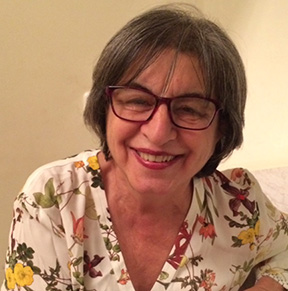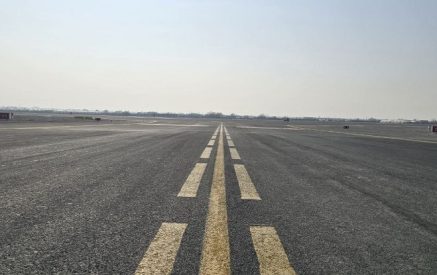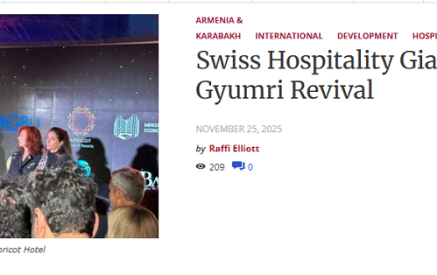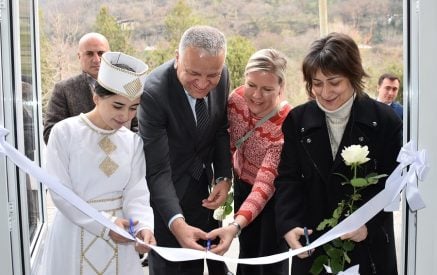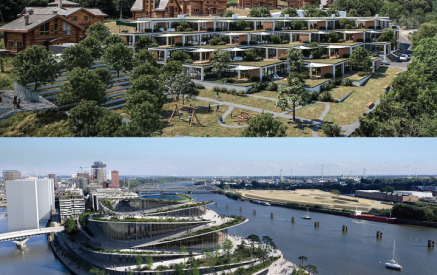BY CATHERINE YESAYAN
On Wednesday morning, on December 7, 1988, Armenians around the world woke up to the horrific news of the earthquake that hit and ravaged the two cities of Gyumri and Spitak and caused at least 25,000 souls to perish and shook Armenia and its diaspora to the core.
The earthquake was estimated to have had a magnitude of at least 6.8 on the Richter scale. The forceful rattle, combined with the poor quality of the communist era construction, caused an unprecedented devastation that its scars still show today after 30 years.
For those who were there when the shock occurred and rattled the region, 11:41am, the moment that the earthquake hit, is permanently engraved on their minds. In no time, the world started to pour money and all kinds of aid to the victims of the earthquake.
In July of 2012, twenty-four years after the earthquake, we, three friends and a tour guide, criss-crossed Armenia and re-discovered many sights. It was then that for the first time, I visited Gyumri, which captured my heart. They say, “It’s easy to fall in love with Gyumri,” and I did.
All I knew, Gyumri was the city hit hard by the earthquake. I should admit that I had little knowledge or maybe none about it’s historical value nor the aristocratic life, nor the wealth of beautiful mansion-type homes built in 19th century, featuring unique architectural style in distinctive Black and red stone.

The museum of National Architecture and Urban Life of Gyumri
Gyumri, sometimes spelled Kumayri, has been inhabited for almost 5,000 years and was part of the ancient kingdom of Urartu. Our tour guide shared with us that Gyumri, during Russian Empire, was an important outpost and in 1837, it was renamed Alexandropol, after the wife of Tsar Nicholas I—Princess Alexandra Feodorovna.
After the Russian Revolution in 1917, when Tsarist regime was dismantled, the name of the city was changed to Leninagan—the city of Lenin, and then again, after the fall of the Soviet Union in 1991, the name reverted back to Gyumri.

Replica of an aristocratic living room and a dinning room late 19th century in Gyumri
We arrived in Gyumri in the afternoon. After we got situated in the Berlin Art Hotel, our tour guide took us for a walking tour, which gave us a sense of the high life of Gyumri in the late 19th up to early 20th century.
On our walk we came across many damaged buildings by the earthquake that still remained in their crumbled state from 24 years ago. We also saw some prefab metal containers called domiks (meaning small homes in Russian)
Very soon after the earthquake hit, the Soviet Union shipped those domiks for an immediate and temporary solution, so that the victims of the earthquake would have a shelter and not to freeze in the harsh winter of Gyumri.

Another exhibit at the museum
However, after 24 years, we saw people were still living in those tiny metal shacks, which were already rusted, without proper insulation and no running water. To see people living in that deplorable condition was heart-wrenching.
We stayed in Gyumri for only one night, which was enough time to explore the city. Our day trip of the city was unforgettable, and I am still under the spell of places we visited, especially the museum of National Architecture and Urban Life of Gyumri, where I learned about the aristocratic life of Gyumri during the Tsarist period. I have not seen anything like that museum, in any other city in the world.
The museum was housed in an enormous estate that once belonged to a wealthy Gyumri merchant, built in 1872. As we walked into the courtyard of the museum, I got chills to see that the huge estate which had a palatial presence and in its heyday was occupied by a regular family not the royalty.
That short visit of Gyumri left me with a desire to return and stay there for a longer period to study and write about the effects of the earthquake on families and the community.




















































